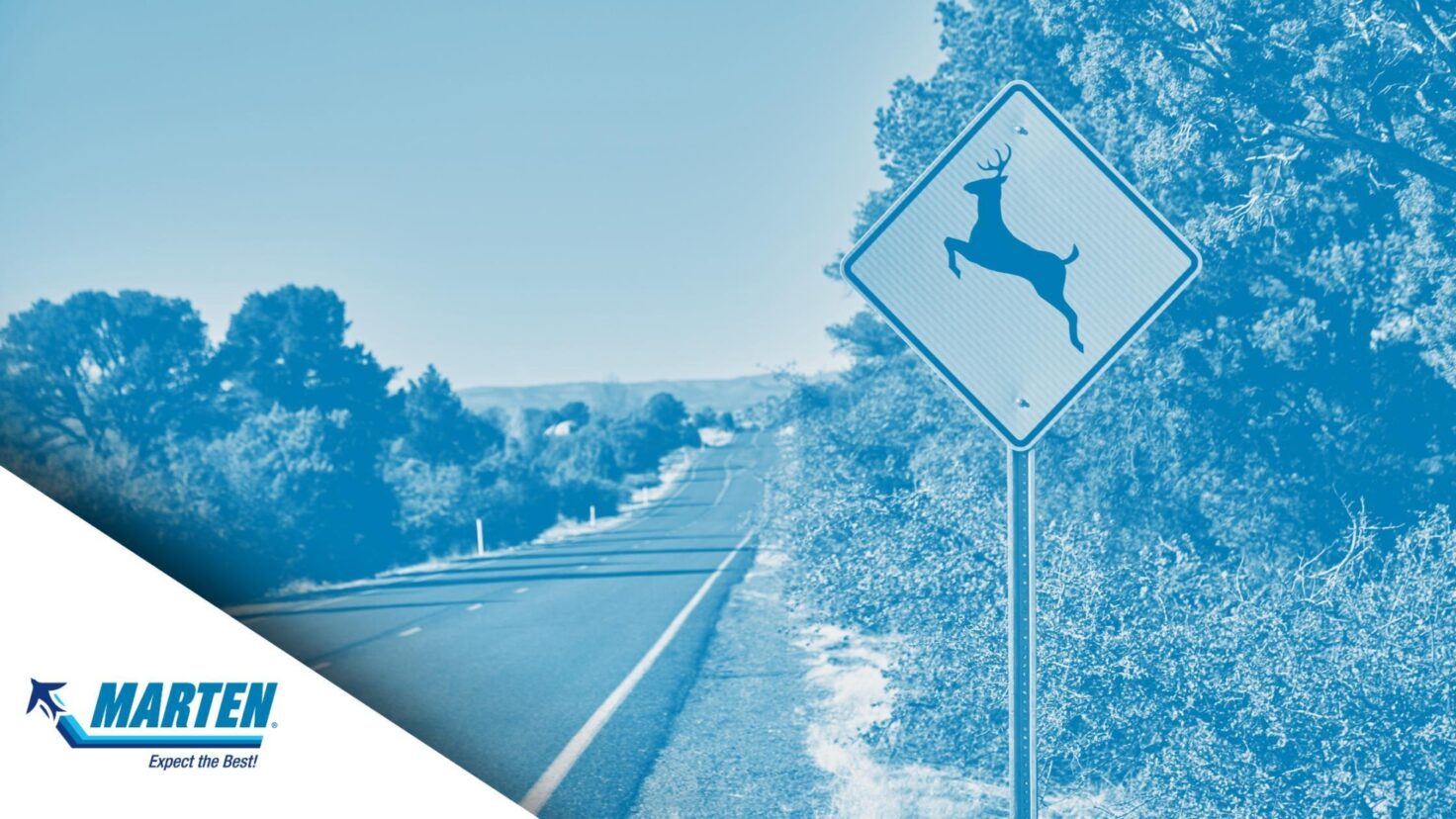
Deer Season Is Here: Avoiding Wildlife Collisions This Fall
Fall brings crisp air, colorful leaves, and a welcome break from summer’s heat. But for professional drivers, it also brings a serious hazard: peak deer season. Each year, thousands of accidents across the U.S. involve deer and other wildlife. For truck drivers behind the wheel of a large rig, these encounters can be even more dangerous—not only for you, but for other motorists around you.
At Marten, safety isn’t just a priority—it’s the foundation of everything we do. That’s why it’s so important to stay alert and prepared when wildlife is on the move this season. Here’s what you need to know to steer clear of potential collisions and keep yourself rolling safely.
Why Fall Is Risky
Deer are most active on and around roadways from October through December, a period that coincides with both their mating season and migration patterns. Shorter daylight hours mean more driving in low-light conditions, when deer are naturally harder to spot. Add in the fact that deer tend to move in groups and often dart across roads unexpectedly, and the chances of an encounter rise dramatically.
Drivers covering rural highways, wooded areas, or farmland routes should be especially cautious. Even major interstates can run through high-traffic deer zones, so it’s best to stay vigilant everywhere.
Tips for Avoiding Wildlife Collisions
1. Stay Extra Alert at Dawn and Dusk
Most deer-vehicle collisions happen during the early morning or evening hours. Slow down slightly during these windows, and keep your eyes moving across the road and shoulders.
2. Use High Beams Wisely
When conditions allow, flip on your high beams to expand your view. You’ll often spot the reflection of deer eyes before you see their bodies. If you catch that early glint, you’ll have more time to react.
3. Don’t Swerve
It may feel instinctive to swerve when an animal jumps into the road, but this often causes greater damage. Sudden swerves can push you into oncoming traffic, off the roadway, or even cause a rollover. If a collision is unavoidable, brake firmly, hold the wheel steady, and stay in your lane.
4. Expect More Than One
Deer rarely travel alone. If you see one cross the road, assume there are others nearby. Keep your speed down and stay cautious for the next few seconds.
5. Pay Attention to Signs
Deer crossing signs are based on local data showing frequent animal movement. They aren’t random—treat them as warnings and increase your vigilance in those areas.
6. Keep a Safe Following Distance
If the vehicle ahead of you has to brake suddenly for wildlife, you’ll need extra space to respond safely. Maintaining distance gives you time to stop without panic.
7. Use Your Horn if Necessary
If you see a deer on the roadside, a quick honk may be enough to discourage it from stepping into the road.
After a Collision
Despite your best efforts, sometimes a collision with wildlife can’t be avoided. If it happens:
- Pull over safely, turn on your hazard lights and set out your safety triangles.
- Don’t approach the animal. Injured deer can be unpredictable and dangerous.
- Check your truck only if it’s safe. Damage to headlights, tires, or the radiator can make the vehicle unsafe to drive.
- Report the incident immediately according to Marten’s safety procedures.
Safety First, Always
Wildlife collisions can happen in a split second, but the right habits make a difference. By slowing down, scanning your surroundings, and knowing how to respond if a deer darts out, you reduce the risk to yourself and to everyone sharing the road.
Just like you stay alert to avoid sudden hazards, Marten stays committed to supporting and protecting our drivers—every mile, every season. Together, we’ll make this fall a safe and successful one.